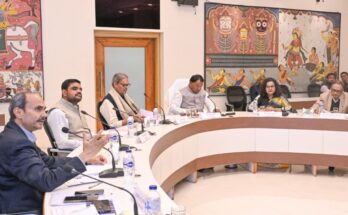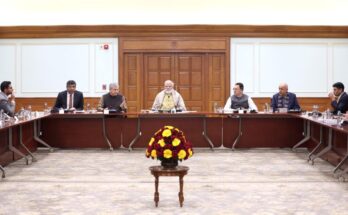By Jayajit Dash
Climate Literacy: Climate change is a formidable challenge. And sustainability is seemingly on everyone’s lips. The world has galvanized efforts to sign up for a green tomorrow. There has been ample rhetoric and glib talk on the United Nations Framework Convention on Climate Change (UNFCC) and the Amazon Climate Pledge. The world has witnessed an urgent need to combat climate change and transition towards a sustainable, net-zero future. Kofi Annan, former UN Secretary-General, once said: “On climate change, we often don’t fully appreciate that it is a problem. We think it is a problem waiting to happen.”
But are corporates doing enough to cut Greenhouse Gas (GHG) emissions across their business cycles? In the frenetic race for a net-zero world, companies have faced accusations of greenwashing and pledging passive investments to pare the carbon footprint. However, of late, they have realized the need for decisive climate action. And there is a growing chorus of support for climate literacy. To foster a sustainable future, corporations must embrace meaningful and measurable solutions to reduce GHG emissions. They must make bold commitments and allocate necessary resources to effect a lasting shift in their operations. Only then can we expect to see their stated goals become a reality.
As the impacts of climate change become increasingly evident, companies across sectors are stepping up to play a pivotal role in spreading climate literacy. By educating their employees, customers, and stakeholders on climate issues, these companies are fostering a deeper understanding of environmental challenges and encouraging collective action to cut down on emissions. It is heartening that companies are taking up the mantle of climate literacy to drive positive change and achieve a sustainable, net-zero world. As Thomas More once said: “One of the greatest problems of our time is that many are schooled but few are educated.”
The Need for Climate Literacy
According to Pew Research Center, 45% of Americans think climate change is a major threat, highlighting the need for widespread climate literacy campaigns. Additionally, MIT Sloan School of Management estimates that achieving net-zero carbon emissions by 2050 could save global $336 trillion in economic benefits compared to unmitigated climate change. According to the World Economic Forum, 60% of global carbon emissions are the result of individual actions and behaviours, which reinforces the need to empower people with climate knowledge. For instance, providing access to data-driven climate information and relevant tools can help individuals make better and more sustainable choices.
How different sectors are embracing and spreading climate literacy?
Tech Industry: Many tech giants are leveraging their global influence to promote climate literacy. Using interactive quizzes and personalized recommendations, Google’s “Your Plan, Your Planet” initiative teaches users about climate change. Getting people involved in such efforts raises awareness and empowers them to do something about it. For instance, the initiative provides users with tailored tips to reduce their carbon footprint, such as installing solar panels or using public transport.
Energy Sector: In climate education, renewable energy companies are leading the way. Founded in the early 50s,Ørsted is a global leader in offshore wind. They’ve set ambitious targets to be carbon neutral by 2025 and launched educational campaigns in schools and communities. This is similar to a farmer planting a crop and then tending to it, not only to harvest the crop but also to ensure that it’s healthy enough to produce the best yield. Similarly, Ørsted’seducational campaigns are nurturing a generation of climate-aware citizens who are capable of creating a more sustainable future.
Retail Industry: To engage consumers in sustainable practices, retailers are embracing climate literacy. Through its “Worn Wear” program, Patagonia teaches customers about environmental issues and inspires responsible consumption and circular economy principles through sustainable materials.
Financial Sector: Banks and financial institutions are integrating climate education into their services. Bank of America, for instance, launched a Sustainable Finance Education program to educate clients about green financing and investment opportunities. This is similar to a doctor prescribing medicine and also teaching the patient how to change their lifestyle to prevent future illness. Banks are providing financial services while also teaching their clients about how to make responsible investments and build sustainable portfolios.
A Vision for the Future
In envisioning a future where climate literacy is widespread across companies and communities, we can see the following transformative outcomes:
A Collective Commitment: Across sectors, companies prioritize climate literacy initiatives, encouraging employees, customers, and stakeholders to embrace sustainable practices together. This focus on climate literacy creates an atmosphere of collective responsibility for the health of the planet and underscores the importance of each individual’s contribution to its sustainability.
Informed Decision-Making: A climate-literate consumer makes informed choices, supporting sustainable products and services, and incentivizing companies to adopt greener practices. Sustainable products and services are more likely to be purchased by consumers when they understand their environmental impact. In response, companies shift their production methods to be more sustainable, creating a demand for sustainable products and services.
Climate-Resilient Workforce: Employees equipped with climate knowledge are better prepared to tackle climate-related challenges and drive innovation towards a sustainable future. For instance, employee education and training can improve resource efficiency, and staff can be encouraged to conduct research and develop solutions that reduce the company’s climate impact.
Advocacy and Policy Changes: A well-informed public demands stronger climate policies, prompting governments to take more decisive actions towards achieving net-zero emissions. With more people becoming aware of the causes and effects of climate change, they are calling for stricter policies that will help reduce emissions and mitigate the effects. This has led governments to develop more ambitious climate plans and policies, with an emphasis on reaching net-zero emissions.
Climate change requires concerted efforts from all corners of society, and companies have a crucial role to play. To empower communities and individuals to make environmentally conscious choices, these companies provide education, raise awareness, and promote sustainable practices. Creating a sustainable, net-zero world, where future generations can thrive in harmony with our planet, becomes more achievable as more businesses embrace climate literacy. Let’s work together today to make tomorrow greener and more resilient. Let’s not forget to enjoy the journey! After all, we can’t save the planet without a bit of laughter and a smile!




